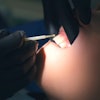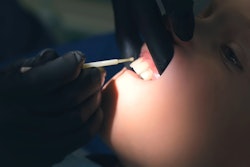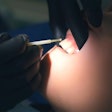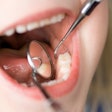A low-fluoride gel with sodium trimetaphosphate (TMP) may promote greater enamel remineralization than a traditional, more concentrated gel, according to a study recently published in the Journal of Dentistry.
Additionally, nanosized TMP led to greater remineralization than micrometric particles, the authors wrote.
“The experimental formulation significantly outperformed the conventional fluoride gel in promoting enamel remineralization,” wrote the authors, led by Tamires Passadori Martins of the São Paulo State University School of Dentistry in Brazil (J Dent, July 8, 2025, 105964).
This double-blind, crossover, in situ study included 10 adults and was conducted in four, three-day phases with seven-day washout periods. Bovine enamel blocks with carieslike lesions were divided into four treatment groups, including a placebo, 9,000 µg F/g (9000F), 4,500 µg F/g with 5% micrometric TMP (4500F+5%TMPmicro), and 4,500 µg F/g with 5% nanosized TMP (4500F+5%TMPnano), they wrote.
Each participant wore a palatal device containing four demineralized enamel blocks. Two blocks were removed immediately after gel application to assess calcium fluoride (CaF₂) formation. After each phase, samples were analyzed for surface hardness recovery, cross-sectional hardness (ΔKHN), and CaF₂ retention.
The mean fluoride concentrations (µg F/g) were 50.5 for the placebo, 9,091.2 for 9000F, 4,131.7 for 4500F+5%TMPmicro, and 4,387.4 for the 4500F+5%TMPnano groups. Initial enamel surface hardness averaged 353.4, with a mean hardness loss of 83.9% after lesion induction, showing no significant differences among groups (p = 0.932), they wrote.
Furthermore, surface hardness recovery was highest for the 4500F+5%TMPnano group followed by 4500F+5%TMPmicro, 9000F, and placebo groups, while ΔKHN showed the opposite trend. The highest levels of loosely bound fluoride after application were found in the 9000F group, but after three days, all groups showed a decrease, with the placebo consistently showing the lowest values.
The study had limitations. The three-day in situ protocol may not have accurately reflected long-term clinical conditions or caries progression over time, the authors added.
“The low-fluoride gel with TMPnano could be a safe and promising alternative in clinical practice, since it has a higher remineralizing capacity and offers a lower risk of acute side-effects compared with a conventional formulation,” they wrote.




















